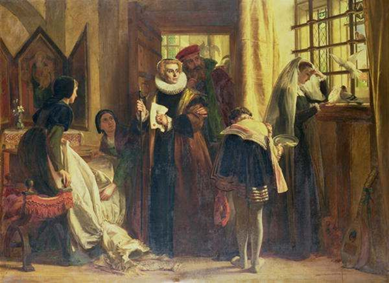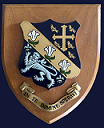
St Joseph's Society

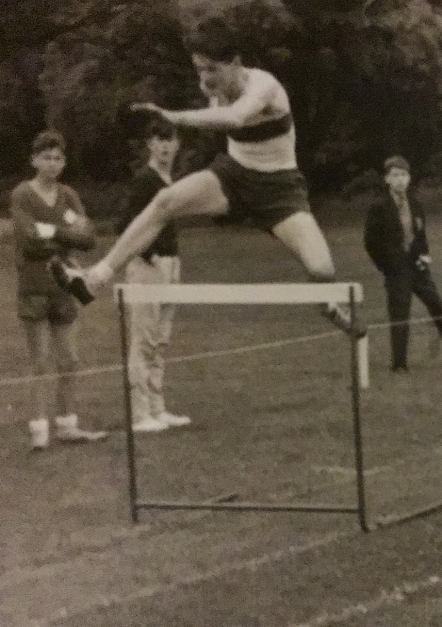
Any visitor to the college in years past would be familiar with its large collection of (mainly Victorian) paintings and other artwork, many of which hung on the walls of the corridors on the ground floor, which formed the main quadrangle.
As students, we walked past many of them daily, without truly knowing their history, subject matter and significance. Ironically, although we had art classes, no one ever took us for a walk round the paintings as one might do in a gallery. The college has taught me a life-long love of 19th century art.
In the mid-1920s, three very long corridors were added to the existing college building to form the main quadrangle. The corridors were designed to be bright and spacious, thanks to a large number of leaded windows. However, the corridors were empty of decoration – and there were a couple of hundred metres of plain white walls.
Although many benefactors helped to provide medium or large pictures for the corridors and other ground floor rooms, mention must be made of Canon Joseph Clarkson, who had a life-long interest in art, and donated many of them. The college’s expansion in the 1920s coincided with the demise of many large family houses and estates after the First World War as the social order changed; this meant that Canon Clarkson could obtain many paintings through auctions or house sales.
My favourite three paintings are: 1) ‘The Parable of the Wise and Foolish Virgins’ (1884) by John Melhuish Strudwick (1849-1937). An exponent of the Pre-Raphaelite school, Strudwick painted religious and romantic scenes and the Liverpool ship owner William Imrie was a keen patron. Upholland had four of his paintings, including ‘Falling Leaves’ (1898). The paintings were sold at Christies in June 1986 with a guide price of c. £150,000 each. The picture of 'The Wise and Foolish Virgins' was later sold by Sotheby’s in December 2015 for £305,000
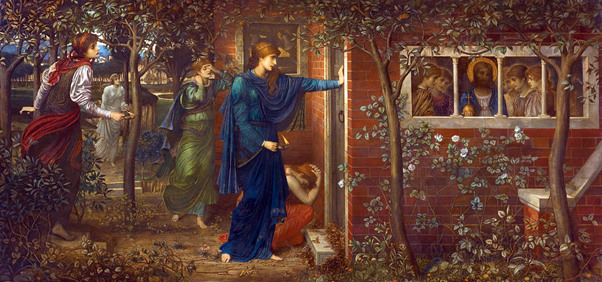
2) ‘The Emir’ by Ludwig Deutsch. Deutsch was an Austrian artist, who worked mainly in Paris. He is famous for his orientalist-style paintings; this particular school or art is not without its critics. This particular, and now famous, painting was ‘lost’ to the art world for decades as it was stored in the college attics after purchase. It was discovered in the early 1980’s when it was brought out of storage to fill a space on the walls when another painting was taken for restoration. It is now commonly agreed that the picture is of the Emir’s guard, rather than the Emir himself.
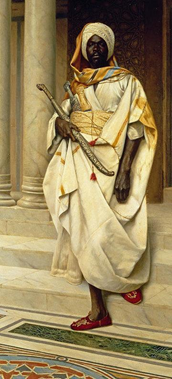
3) ‘Mary Queen of Scots in Captivity’ (1871). At the age of 26, Mary was consigned to the charge of Bess of Hardwick (Countess of Shrewsbury), whose prisoner she was for nearly 16 years. Mary is dressed in black at a mullioned window of her bedchamber where she has been held captive for many years. Bess of Hardwick enters the room, clutching the warrant for Mary’s execution. London-born artist John Calcott Horsley’s (1817-1903) painting was exhibited at the Royal Academy. Horsley, is also credited with designing the world’s first Christmas card (commissioned by Henry Cole). Horsley was rector and treasurer of the Royal Academy from 1875 to 1890 and 1882 to 1897 respectively. He earned the nickname ‘Clothes-Horsley’ from Punch for his opposition to the use of nude life models, which caused scandal and arguments in polite Victorian society.
